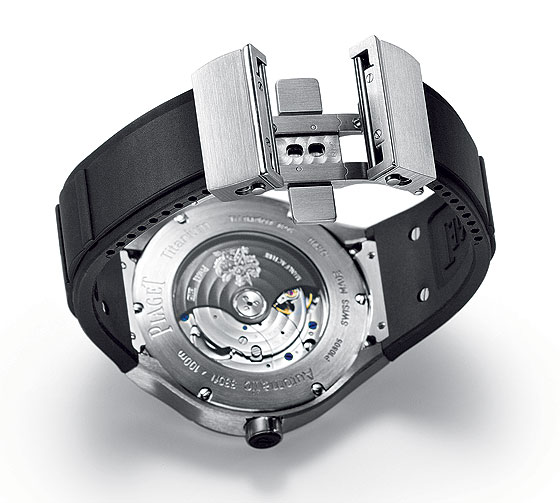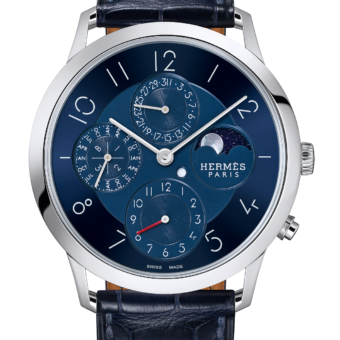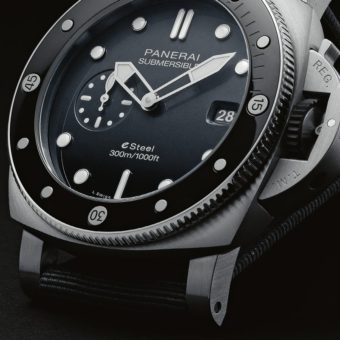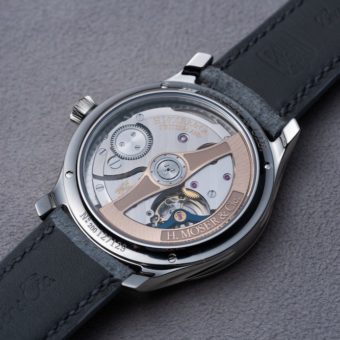The clasp mechanism itself is as well-designed as the case and is carefully finished. Four small push-buttons on the sides of the clasp can be used to slightly lengthen or shorten the strap. Piaget calls these two options the “summer/winter” positions. Since the strap moves within the clasp, the mechanism appears unchanged, and this also makes it easy to accommodate slight changes in wrist size resulting from changing temperatures. However, during our wear test, the clasp mechanism opened without warning on occasion.
We appreciate that Piaget gave the 100-meter-water-resistant Polo a sapphire caseback offering a view of the beautiful manufacture caliber 800P. The circular côtes de Genève pattern is a characteristic decoration on Piaget movements. In addition to hour, minutes and seconds, the watch shows the current date. The large cutout display, which shows three dates, fits well in the overall dial layout. A nice alternative to the more conventional two-digit date display, this style has become quite popular on watches these days, despite its inherent redundancy.

A double barrel construction ensures a power reserve of up to 72 hours, and the screw balance vibrates at 21,600 vph, though it remains virtually unseen beneath the bridge and regulator. The tempo is classic but the discernible jumping of the second hand detracts from the dynamic appearance of a sports watch. The 800P automatic movement from 2006 is the newest caliber type at Piaget and provides the base for a number of derivations. (A closely related movement, 880P, ticks in the Polo FortyFive chronograph at a quicker frequency of 28,800 vibrations per hour.)
Despite the beauty of the movement, it must be said that the rate results were not superior. With stable amplitudes the timing machine registered results between -2 and +10 seconds per day. On the wrist, the average rate was about +5 seconds per day.






